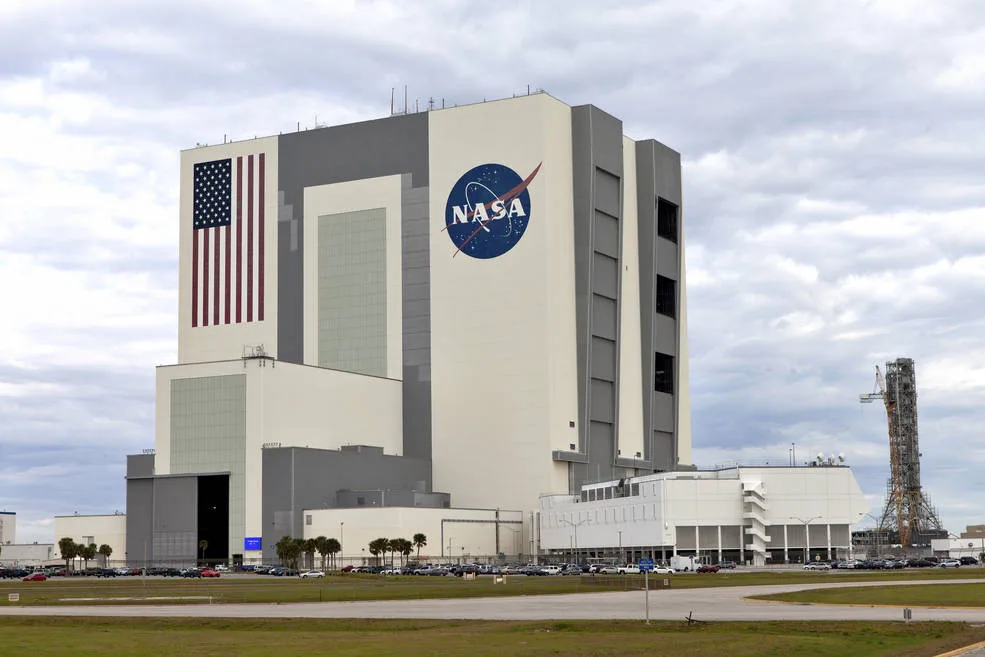When Clouds Formed Inside NASA and How SpaceX Changed the Rocket GameAh, the space age. A time of wonder, innovation, and… indoor weather? That’s right! Rumor has it that clouds once formed inside NASA’s Vehicle Assembly Building (VAB) where the mighty Saturn rockets were assembled. But before we dive into that meteorological marvel, let’s take a journey through the evolution of rocket assembly and how companies like SpaceX have revolutionized the game.
Cloudy with a Chance of Rockets
The VAB at NASA’s Kennedy Space Center in Florida is a behemoth of a building. Standing at 160 meters tall, it’s one of the largest buildings in the world by volume. With such a vast space, it’s no surprise that the building has its own microclimate. Legend has it that on particularly humid days, clouds would form near the ceiling of the VAB. While this might sound like a scene straight out of a sci-fi movie, it’s a demonstration of the sheer scale of the facilities required for the space race era’s monumental tasks.
Rocket Assembly: Then vs. Now
40Back in the golden age of space exploration, rocket assembly required vast facilities, tons of manual labor, and a sprinkle of “we’ve-never-done-this-before-so-let’s-hope-it-works” attitude. The requirements were stringent:
- Size Matters: Rockets are big. Really big. Hence, you need a gigantic facility to assemble them.
- Clean and Pristine: Rockets are sensitive creatures. Dust, debris, or even a stray bolt could spell disaster. Cleanliness was (and still is) paramount.
- Safety First: With tons of explosive fuel and complex machinery, safety protocols were a must.
Fast forward to today, and while some things remain the same (rockets are still big and still sensitive), the methods have evolved. Enter SpaceX.
SpaceX: The New Kid on the Rocket Block
SpaceX, founded by the ever-ambitious Elon Musk, has turned the traditional rocket assembly process on its head. How? Let’s break it down:
- Streamlined Production: SpaceX took a page out of the automotive industry’s book and adopted an assembly line approach. This means standardized parts, reduced waste, and faster production times.
- Reusability: One of SpaceX’s game-changers is the reusability of their rockets. Traditional rockets are used once and discarded, but SpaceX’s Falcon rockets are designed to return to Earth and fly again. This drastically cuts costs.
- In-House Manufacturing: Instead of relying on parts from multiple suppliers, SpaceX makes almost 80-90% of all its rocket components in-house. This not only reduces costs but also ensures quality control.
SpaceX vs. Arianespace: The Efficiency Showdown
Arianespace, Europe’s premier launch service provider, has been in the game since the 1980s. While they have a proven track record, their methods are more traditional, and their rockets aren’t reusable. This makes each launch more expensive.
SpaceX, on the other hand, is like the Silicon Valley startup of the space industry. They’re agile, innovative, and aren’t afraid to take risks (remember the first few Falcon 9 landings?). This approach, combined with the factors mentioned above, allows SpaceX to offer launches at a fraction of the cost of competitors like Arianespace.
In Conclusion: From Indoor Clouds to Reusable Rockets
The journey from the early days of the space age, with its indoor clouds and colossal buildings, to the sleek efficiency of modern companies like SpaceX, is nothing short of remarkable. It’s a testament to human ingenuity and our never-ending quest to reach for the stars (while saving a few bucks along the way).
So, the next time you look up at the sky and see a cloud, remember the VAB and think of how far we’ve come. And who knows? Maybe one day, SpaceX will have its own indoor weather phenomenon. Rain inside a rocket factory, anyone?

